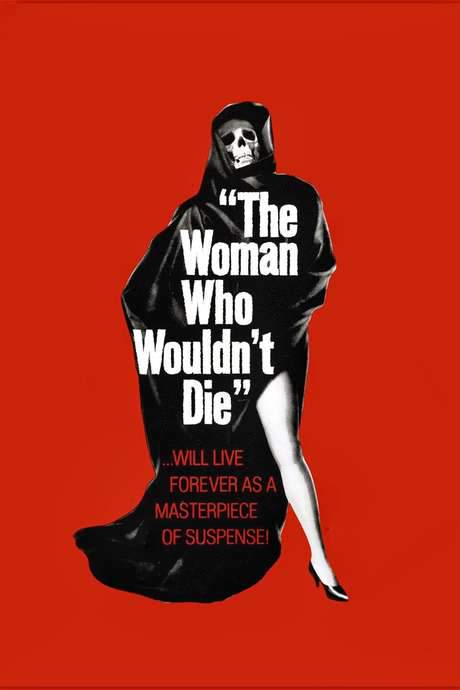The Crimson Rivers 2001

A seasoned detective and his young protégé investigate a murder at a French monastery, uncovering a complex conspiracy. Their investigation reveals a dangerous radical cult and a decades-old secret linked to World War II. As more bodies appear, they find themselves in a deadly cat-and-mouse game with forces threatening global consequences, forcing them to confront a web of intrigue and hidden agendas.
Does The Crimson Rivers have end credit scenes?
No!
The Crimson Rivers does not have end credit scenes. You can leave when the credits roll.
Meet the Full Cast and Actors of The Crimson Rivers
Explore the complete cast of The Crimson Rivers, including both lead and supporting actors. Learn who plays each character, discover their past roles and achievements, and find out what makes this ensemble cast stand out in the world of film and television.
External Links and Streaming Options
Discover where to watch The Crimson Rivers online, including streaming platforms, rental options, and official sources. Compare reviews, ratings, and in-depth movie information across sites like IMDb, TMDb, Wikipedia or Rotten Tomatoes.
Ratings and Reviews for The Crimson Rivers
See how The Crimson Rivers is rated across major platforms like IMDb, Metacritic, and TMDb. Compare audience scores and critic reviews to understand where The Crimson Rivers stands among top-rated movies in its genre.

49
Metascore
7.0
User Score
Take the Ultimate The Crimson Rivers Movie Quiz
Challenge your knowledge of The Crimson Rivers with this fun and interactive movie quiz. Test yourself on key plot points, iconic characters, hidden details, and memorable moments to see how well you really know the film.
The Crimson Rivers Quiz: Test your knowledge on the chilling mystery of 'The Crimson Rivers' and its dark secrets.
Who is the main investigator in 'The Crimson Rivers'?
Pierre Niemans
Max Kerkerian
Remy Callois
Dr. Cherneze
Show hint
Full Plot Summary and Ending Explained for The Crimson Rivers
Read the complete plot summary of The Crimson Rivers, including all major events, twists, and the full ending explained in detail. Explore key characters, themes, hidden meanings, and everything you need to understand the story from beginning to end.
Detective Superintendent Pierre Niemans, portrayed by Jean Reno, is sent to the isolated university town of Guernon nestled in the picturesque French Alps to investigate a horrific murder that has shaken the academic community to its core. The victim, Professor Remy Callois, a highly respected scholar and custodian of the university’s secrets, has been found brutally murdered, his eyes cruelly removed. As Niemans begins to untangle the threads of this chilling case, he consults with Dr. Cherneze, played by Jean-Pierre Cassel, an ophthalmologist who sheds light on the dark legacy of inbreeding among the faculty members, a consequence of their seclusion and misguided obsession with intellectual elitism.
Meanwhile, in the neighboring town of Sarzac, Detective Inspector Max Kerkerian, brought to life by Vincent Cassel, finds himself investigating a perplexing series of events surrounding the desecration of the grave of Judith Herault, a young girl who perished in 1982. The mystery deepens as photographs of her are mysteriously stolen from the local primary school. As Niemans intensifies his inquiry, he becomes enmeshed in a sinister conspiracy that could be linked to the faculty’s medical establishment in Guernon.
His investigation takes a twist when he encounters Fanny Ferreira, a glaciologist entangled in her own secrets. As Niemans rummages through the late librarian’s office, he uncovers a chilling archive detailing the original faculty’s malevolent intentions to forge a super-race through intellectual selection, bypassing physical criteria altogether. This shocking revelation hints that their inbreeding practices were not mere accidents, but rather a calculated effort to engineer a so-called “superior” being.
As Niemans and Kerkerian’s paths converge, they stumble upon a second victim, killed in a similarly ritualistic manner as Callois, this time discovered within the icy depths of a glacier. The glassy eyes of the unfortunate soul send chills down their spines, solidifying their understanding that the perpetrator is not an ordinary murderer, but someone far more dangerous.
Tension escalates when Niemans rendezvous with Kerkerian at the residence of the latest victim, only to realize he has been inadvertently lured deeper into the enigma. As they piece together the puzzle, they uncover that the fingerprints on Niemans’ firearm belong to none other than Judith Herault herself. The game intensifies, and the stakes soar to alarming heights.
Navigating the treacherous mountain roads to reach Fanny’s residence, the duo narrowly avoids disaster thanks to the reckless driving of the Dean’s wayward son. Their minds race with the dark truths being unveiled: the university’s covert breeding program, which had been swapping healthy village children for those of faculty members burdened by genetic deformities from generations of inbreeding. The faculty’s medical professionals had unwittingly participated, with Callois’ meticulous planning paving the way for these morally bankrupt arrangements.
The deeper they delve, the more chilling the implications become. Sertys must have switched Fanny with one of the deceased faculty babies, while her identical twin sister, Judith, was left with their family as a control subject. After Judith’s recent hospital stay due to a broken wrist, her mother recognizes an uncanny likeness between Judith and Fanny, leading to a desperate escape from the hospital, pursued by the very faculty members who precipitated a tragic accident claiming her husband’s life.
As her grasp on reality weakens, the mother finds sanctuary in adopting the somber attire of a nun, while Judith becomes voraciously intent on reclaiming Fanny. The unearthed remnants of horrors—the hands and eyes of the program’s victims—discovered hidden in Fanny’s basement, ominously amplify their dawning comprehension of the lurking evils.
In a climactic moment, as chaos reigns, Niemans takes charge, ordering an evacuation of the university as he and Kerkerian embark on a treacherous journey up the mountain to find Fanny. However, a shocking confrontation awaits them—Judith, in her terrifying intensity, commands Fanny to eliminate Niemans. The clash escalates into a chaotic gunfight that triggers an avalanche, burying all parties beneath the snow’s relentless embrace. As the flurry settles, so do the fates of those involved, precariously awaiting the arrival of rescuers amidst the silent aftermath.
Uncover the Details: Timeline, Characters, Themes, and Beyond!

Coming soon on iOS and Android
The Plot Explained Mobile App
From blockbusters to hidden gems — dive into movie stories anytime, anywhere. Save your favorites, discover plots faster, and never miss a twist again.
Sign up to be the first to know when we launch. Your email stays private — always.
Watch Trailers, Clips & Behind-the-Scenes for The Crimson Rivers
Watch official trailers, exclusive clips, cast interviews, and behind-the-scenes footage from The Crimson Rivers. Dive deeper into the making of the film, its standout moments, and key production insights.
The Crimson Rivers Themes and Keywords
Discover the central themes, ideas, and keywords that define the movie’s story, tone, and message. Analyze the film’s deeper meanings, genre influences, and recurring concepts.
The Crimson Rivers Other Names and Titles
Explore the various alternative titles, translations, and other names used for The Crimson Rivers across different regions and languages. Understand how the film is marketed and recognized worldwide.
Similar Movies To The Crimson Rivers You Should Know About
Browse a curated list of movies similar in genre, tone, characters, or story structure. Discover new titles like the one you're watching, perfect for fans of related plots, vibes, or cinematic styles.
Quick Links: Summary, Cast, Ratings, More

What's After the Movie?
Not sure whether to stay after the credits? Find out!
Explore Our Movie Platform
New Movie Releases (2025)
Famous Movie Actors
Top Film Production Studios
Movie Plot Summaries & Endings
Major Movie Awards & Winners
Best Concert Films & Music Documentaries
Movie Collections and Curated Lists
© 2025 What's After the Movie. All rights reserved.

































